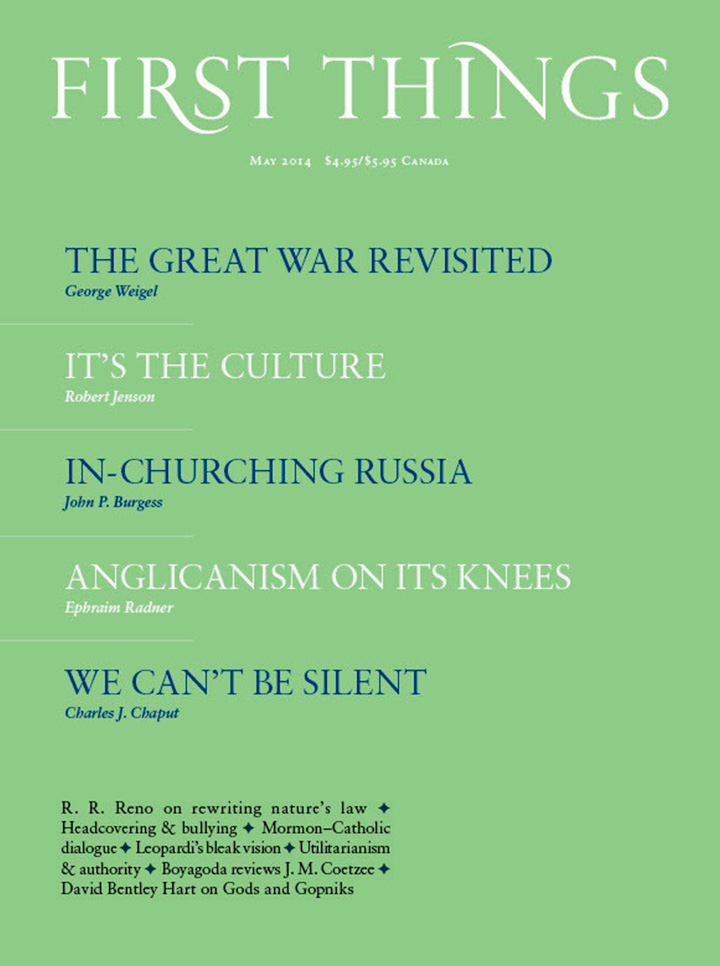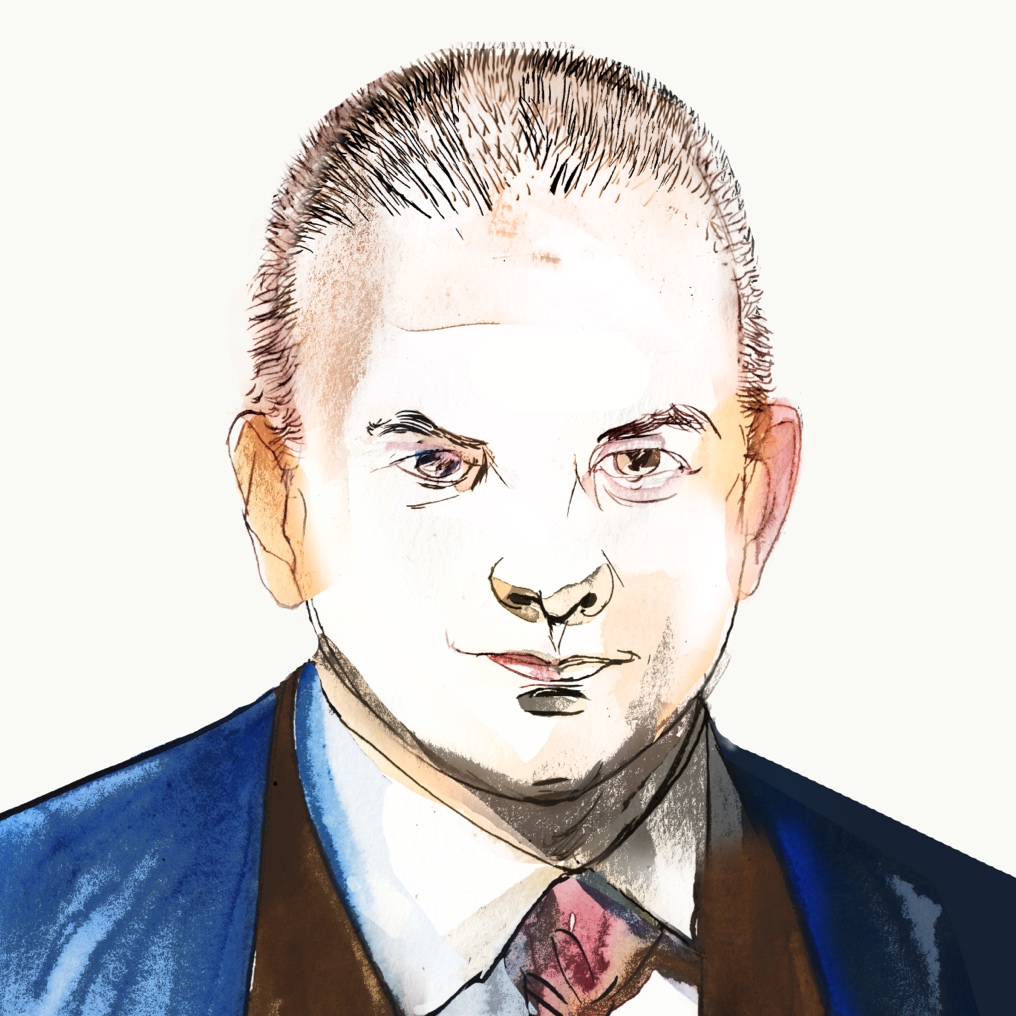by thomas g. guarino
baker, 192 pages, $26.99
The language of the Church has changed over time. The Bible contains no word for Trinity or Incarnation. It does not teach about the Immaculate Conception or the Assumption. These are all doctrines that have been developed over time. Which are true and which, if any, are false? That question brings us to the whole issue of authority. In an era in which notions of authority in general are in a state of confusion, this question of doctrinal authority—of who speaks for God and how we know that they do so—presses down on us like a stone.
Yet this is no new problem. Luther wrestled with the matter as he debated John Eck at the University of Leipzig in 1519 and found, to his surprise, that he was being driven by the logic of his own arguments away from the papacy. In writing his Essay on the Development of Christian Doctrine, John Henry Newman found the matter irresolvable outside of the Roman communion. He thus swam the Tiber between completing the manuscript and seeing it in print.
It is the fifth-century theologian Vincent of Lérins, not Newman, who is the stated subject of Thomas Guarino’s important new book, Vincent of Lérins and the Development of Christian Doctrine; but Newman is certainly its unifying factor and indeed the man who really makes Vincent a significant figure. One cannot understand Newman’s life without understanding how his reading of the Lerinian changed over the years. Vincent raised the issue of how to discern the Church’s true testimony in an acute form, and he thus set the terms of debate for Newman and, given Newman’s massive significance for subsequent Christian thought, for us today.
In the preface, Guarino outlines the little that is known about Vincent’s life. Vincent lived in the fifth century, was a monk in Lérins, defended Catholic Christology, and wrote a work, the Commonitorium, in which he attempted to establish clear criteria for judging Christian truth. In addition to outlining the thin biographical evidence that survives, Guarino addresses a number of interesting questions that directly concern the catholicity of Vincent’s own thought: Was he semi-Pelagian? Was he anti-Augustinian? Guarino answers both in the negative, but the evidential base is so slim that his case, while plausible, is equivocal. Most tantalizing of all: Was Vincent the author of the Athanasian Creed? Again, the evidence is slim, but the Christology (clearly post-Athanasian) and the provenance (the Latin West) make him a possible candidate. Such matters, though, are of peripheral interest compared to the main issue: the interpretation of the two “Vincentian canons.”
The first canon—that the Catholic Church is to hold those truths that have been believed everywhere, always, and by everyone—is probably his most famous and most misunderstood theological contribution. The popular view of the canon is that it is obviously untrue, if not self-refuting. Given the diversity of opinions within the early Church, the canon would appear to mean that only the bare minimum of doctrine can be held to be true. Indeed, if that is what Vincent meant, he is at best an antiquarian, at worst an anti-dogmatic minimalist.
Such a view also makes the second canon immediately problematic. In it, Vincent argues that doctrinal developments must expand upon earlier dogmatic positions by way of legitimate advance (profectus), not distortion or alteration (permutatio). A reading of the first canon as a form of static antiquarianism cannot be consistent with the dynamism implied in the second.
Through a careful, contextual reading of Vincent, Guarino demonstrates that the first canon should not be abstracted from the Church but rather should be understood as referring to the great ecumenical creeds. Thus, naive literal readings of the canon miss the point: Vincent did not believe either in a mythical golden age of catholic dogma or in a static view of doctrine. The first canon is not in conflict with the second but actually provides its necessary foundation.
Enter Newman, subject of the book’s middle chapter. He had initially used Vincent to reject the claims of the papacy on the basis of a static reading of the first canon. Later, wrestling with the trinitarian and christological debates of the fourth and fifth centuries, the Newman of An Essay on Development repudiated the first canon (as he then interpreted it) on the grounds that it could not provide a sufficient criterion for assessing the legitimacy of the Nicene doctrine of the Trinity. In so doing, Newman also demolished what he considered to be the basis for the Anglican via media and placed himself in an ecclesiastically unstable, if not impossible, position.
When is a development a legitimate continuity? When is it an illegitimate deviation? Can one even answer such questions without indulging in anachronism or special pleading on behalf of a later position that one merely wishes to justify? Within the sphere of Christian theology, the issue is even more acute because it is bound to one’s conception of the role of Scripture and the authority of the Church.
Guarino’s last chapter is so useful here because he explicates how Vincent connects to the modern Catholic understanding of the development of dogma. Many Protestants, myself included, have been influenced by the analysis of tradition offered by the Reformation scholar Heiko Oberman. Oberman argues for a twofold understanding of tradition: T1 and T2. T1 is the exegetical tradition of the Church, closely tied to the text of Scripture; T2 is a separate strand of church teaching whose relation to Scripture is much looser. Guarino helpfully shows how the taxonomy of dogma and tradition in the Catholic Church is far more complicated than Oberman’s terminology allows. Oberman is a helpful guide; but compared to Guarino, his account of tradition is approximate rather than precise.
But when Guarino addresses specific examples, my blood starts to run a little orange. He admirably does not opt for easy cases, such as the Trinity, where there is little or no Catholic–Protestant tension. Instead, he looks at Mary and papal infallibility. He makes a valiant effort to demonstrate how the later dogmatic formulations are consistent both with Scripture and with the kind of ecclesiastical foundation to dogmatic formulation for which Vincent argues.
This is where I part company with the author. To justify these dogmas, he points to Vincent’s idea of the harmonious unfolding of doctrine; but the problem is that harmony, like continuity, is so often in the eye of the beholder. To a Protestant, notions of highly developed Mariology (the Immaculate Conception and Assumption) or claims to papal infallibility do not appear to be harmonious developments of earlier positions. To take the former example, Guarino rightly points to the heightening of Mariology in Vincent’s thought and connects this to fifth-century Christological developments, particularly the role of the term Theotokos. That is clearly correct as a point of historical theology.
Guarino then jumps forward fourteen centuries to the Immaculate Conception and the Assumption, seeing them as the result of the Spirit-led interpretation of Scripture by the consentient Church. One accepts that a short book cannot offer a comprehensive history, but that is nonetheless an ambitious leap. Further, even here Guarino seems to realize that he is assuming the legitimacy of the development in order to prove the legitimacy of the development. A couple of telltale cautious rhetorical questions pop up at the very heart of the argument (“Yet is it not possible that . . . ?” “Can these teachings be understood as consonant with . . . ?”). To prove the plausibility of a later development is surely not the same as proving the necessity or the truth of a later development.
As Guarino notes, thoughtful contemporary Evangelical Protestant theologians—he names Kevin Vanhoozer and Timothy George as examples—are aware that their churches’ teachings connect to tradition and do not simply drop, fully formed, from the pages of Scripture. Rather, they represent doctrinal syntheses based upon exegesis, dialogue with the history of theology, and critical interaction with the present. Protestants and Catholics do not disagree over the fact of doctrinal development but over how to discern a legitimate doctrinal development. For Protestants, doctrine has to be either plainly taught in Scripture or derived therefrom by good and necessary consequence. Catholics will no doubt respond that Scripture still requires some body that produces the definitive interpretation; yet the Protestant counter-response will be that that body has to allow itself to be disciplined by Scripture or risk making Scripture at best a post hoc justification for whatever it decides to declare as dogma.
This brings us right back to the problems with which we started: How do we know which doctrines are true and which are not? Guarino elucidates the thought of an important Church Father and of contemporary Catholicism’s approach to doctrinal development, yet I am not persuaded that he seamlessly sews the two together. Vincent clarifies a choice, the same choice that Newman faced: Which has real priority, book or institution? Guarino does not ultimately convince me that he has made the right choice, but his brilliant and fascinating book enables the reader to address the matter in a more informed way, historically, theologically, and ecumenically.
Carl R. Trueman is Paul Woolley Professor of Church History at Westminster Theological Seminary.
In Praise of Translation
This essay was delivered as the 38th Annual Erasmus Lecture. The circumstances of my life have been…
Work Is for the Worker
In these early days of his pontificate, Pope Leo XIV has made one thing clear: The responsible…
Goddity
The Nativity of our Lord—born an infant, laid in a manger. It’s an utterly strange story: The…



